Understanding how organisms reproduce and pass on traits to their offspring is a fundamental concept in biology. In Class 10, the topic of heredity and reproduction covers both how new life is created and how characteristics are inherited from one generation to the next. In this guide, we will simplify complex ideas like genetics, Mendel’s laws of inheritance, and the various modes of reproduction for your easy understanding.
We will also cover the differences between asexual and sexual reproduction, and how traits like eye color, height, or flower color are passed on. You will learn about variation, how it arises, and why it is important for evolution. These topics lay the groundwork for understanding how living beings adapt and survive across generations.
To dive deeper into this topic, explore our dedicated article on Heredity.
Heredity and Variation: Basics of Genetic Transmission
Heredity refers to the passing of traits from parents to offspring through genes. These traits can be physical (like hair color), physiological (like blood group), or behavioral (like handedness). The study of heredity is called genetics. All organisms inherit genetic information from their parents, and this genetic blueprint determines their physical and physiological features.
Variation, on the other hand, refers to the differences between individuals of the same species. Some variation is inherited due to genetic factors, while others arise due to environmental influences like nutrition, climate, and lifestyle. Variation is extremely important because it enables natural selection and allows evolution to occur over generations.
For example, if a population of beetles has both green and brown individuals, and predators spot green ones more easily, brown beetles are more likely to survive and reproduce. Over time, the population might consist mostly of brown beetles. This is a classic example of survival of the fittest based on variation.
Explore more on this concept in our lesson on How Do Organisms Reproduce?.
Mendel’s Laws of Inheritance Explained
Gregor Mendel, known as the father of genetics, conducted groundbreaking experiments on pea plants to understand how traits are inherited. Based on his observations, he formulated three key principles:
1. Law of Dominance
In a cross between two organisms with contrasting traits, one trait will mask the expression of the other in the first filial generation (F1). The trait that appears in the F1 generation is called the dominant trait, while the one that remains hidden is recessive.
Example: If a tall (TT) plant is crossed with a short (tt) plant, all F1 plants will be tall (Tt), because the tall trait is dominant over the short one.
2. Law of Segregation
Each organism carries two alleles for each trait, one inherited from each parent. These alleles segregate during the formation of gametes, ensuring that each gamete receives only one allele. Fertilization restores the pair.
Example: A heterozygous (Tt) plant can form two types of gametes—T and t. When two such plants are crossed, the resulting offspring can be TT, Tt, or tt.
3. Law of Independent Assortment
Genes located on different chromosomes assort independently of each other during gamete formation. This law explains the genetic diversity seen in offspring due to new combinations of traits.
Example: A plant with round-yellow seeds crossed with one with wrinkled-green seeds can produce offspring with new combinations like round-green or wrinkled-yellow.
These laws help explain why siblings may look similar but not identical. You can read further about this in our article on Heredity.
Reproduction in Organisms: Modes and Mechanisms
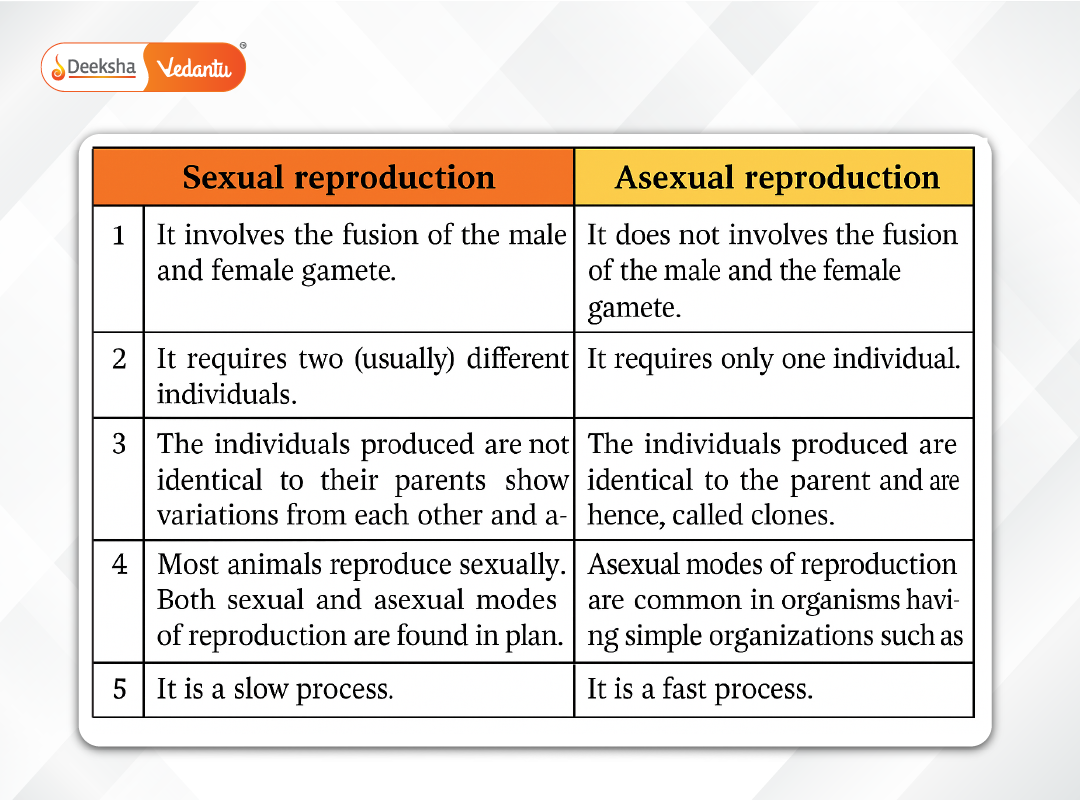
Reproduction is the biological process by which organisms give rise to new individuals of the same kind. It ensures the continuity of species and contributes to population growth. There are two main types of reproduction:
Asexual Reproduction
This type does not involve the fusion of gametes. The offspring is genetically identical to the parent, often called a clone.
Common methods include:
- Binary Fission: A single-celled organism like Amoeba splits into two identical daughter cells.
- Budding: In Hydra, a small outgrowth develops and eventually detaches to become a new individual.
- Fragmentation: Spirogyra breaks into smaller fragments, each growing into a new organism.
- Vegetative Propagation: New plants develop from roots, stems, or leaves. Examples include potato (tubers), sugarcane (stem cuttings), and Bryophyllum (leaf buds).
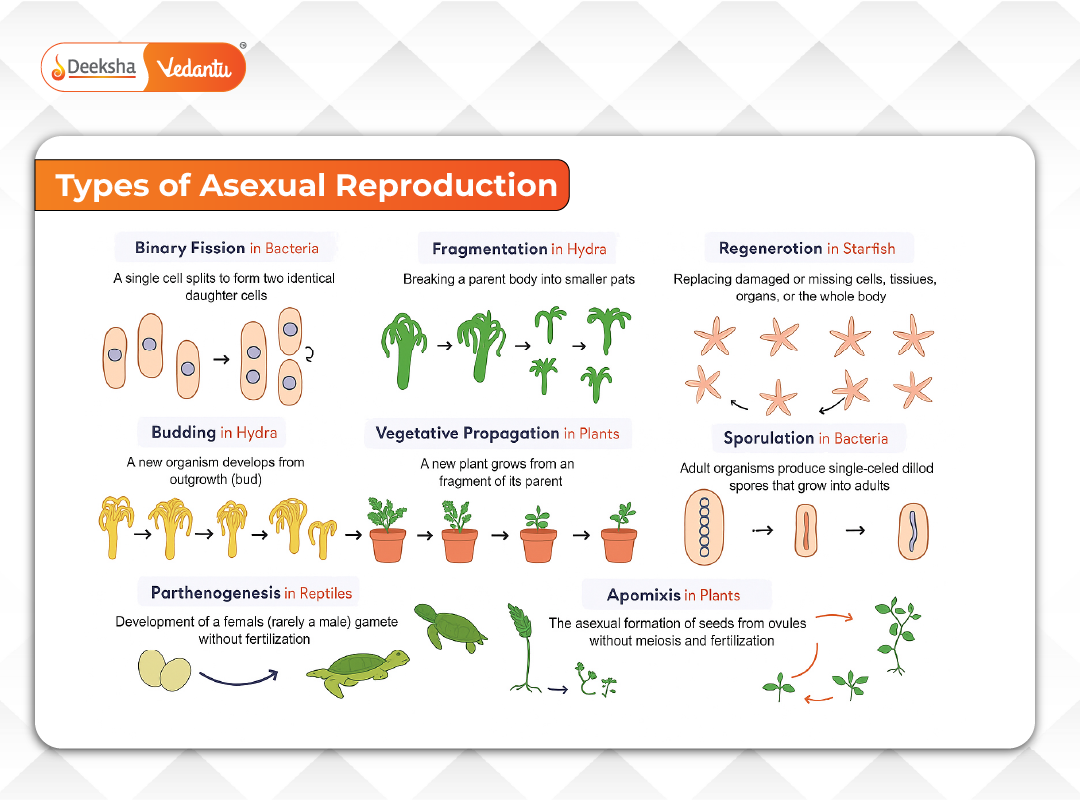
Learn more in our article on Modes of Reproduction Used by Single Organisms.
Sexual Reproduction
Sexual reproduction involves two parents and the fusion of male and female gametes (sperm and egg). The offspring inherits traits from both parents, resulting in genetic diversity.
Key stages:
- Formation of gametes through meiosis.
- Fertilization – the union of sperm and egg to form a zygote.
- Zygote undergoes mitotic division to form an embryo.
- Embryo develops into a new organism.
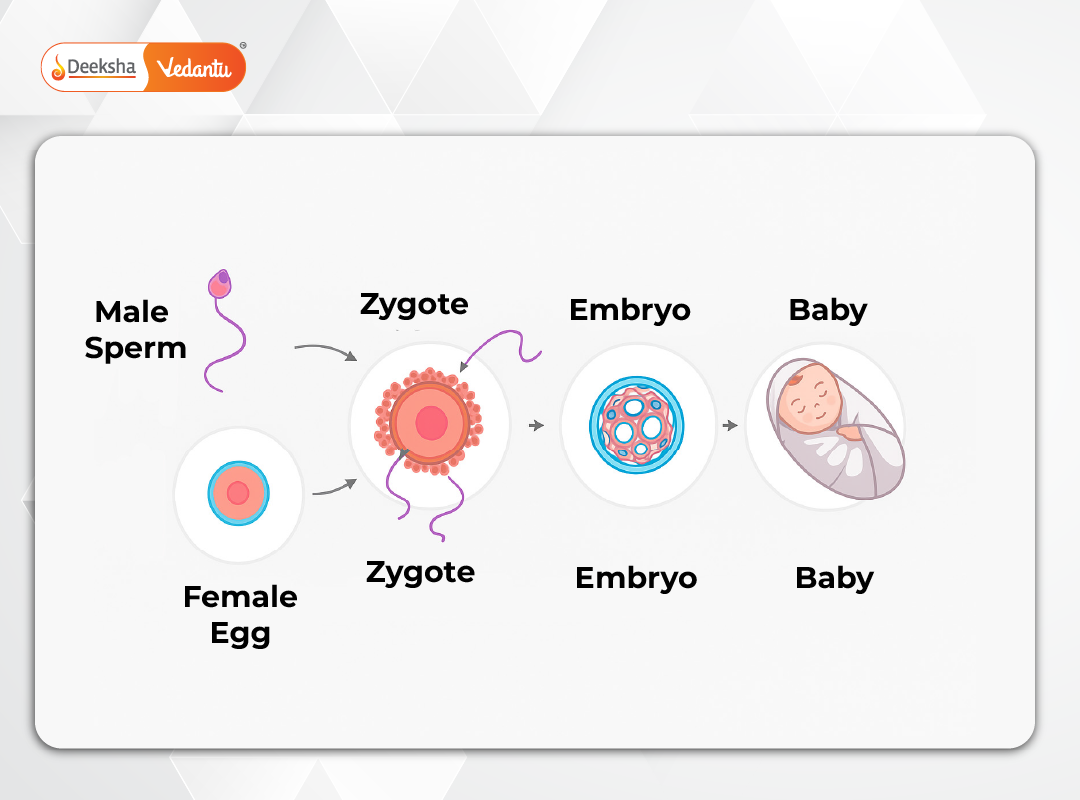
This type of reproduction introduces variation, which is crucial for evolution and adaptation in changing environments. Learn more in our article on Sexual Reproduction.
Genetics Class 10: Understanding DNA and Genes
Genes are functional units of heredity located on chromosomes, and they are made up of DNA (deoxyribonucleic acid). DNA is a double-helix molecule that carries instructions for the development and functioning of living organisms.
- Each gene controls one specific trait, like eye color or blood type.
- Genes exist in alternative forms called alleles. For example, allele ‘T’ for tallness and ‘t’ for shortness in plants.
- The genotype refers to the genetic makeup (e.g., TT, Tt, tt), while the phenotype refers to observable characteristics (e.g., tall or short plant).
- Dominant alleles express the trait even if present in a single copy, whereas recessive alleles express only when both copies are recessive.
Understanding how DNA functions helps explain why children resemble their parents and how inherited diseases are passed through generations.
Examples of Forces and Motion in Reproduction and Heredity
Although forces and motion are primarily physics concepts, they have some interesting parallels in biology as well:
- Force of attraction between egg and sperm plays a role in successful fertilization.
- The motion of sperm towards egg is an active movement guided by chemical signals in the female reproductive tract.
- Chromosomal movements during cell division (mitosis and meiosis) are coordinated mechanical processes that ensure accurate distribution of genetic material.
These physical actions at the microscopic level are crucial for successful reproduction and transfer of hereditary information.
Real-Life Applications of Heredity and Reproduction
- Selective Breeding: Used by farmers and breeders to enhance traits in crops and animals, such as disease resistance or higher yield.
- Genetic Counseling: Provides information to families about the risk of inherited conditions.
- DNA Fingerprinting: A forensic technique used to identify individuals in criminal investigations and paternity cases.
- Gene Therapy: An emerging medical technology where faulty genes are replaced with functional ones to treat genetic disorders.
FAQs About Heredity and Reproduction
1. What is heredity?
Heredity is the biological process through which parents pass genetic traits to their offspring. These traits can include physical characteristics like eye color, height, and skin tone, as well as inherited conditions or diseases. Heredity is made possible by genes carried on chromosomes, which are transferred from parents to their children during reproduction.
2. What is the difference between asexual and sexual reproduction?
Asexual reproduction involves only one parent and produces offspring that are genetically identical to the parent. It is common in single-celled organisms and some plants. Sexual reproduction involves two parents, where male and female gametes fuse to form a zygote. The offspring have a mix of traits from both parents, resulting in genetic variation.
3. Who is the father of genetics?
Gregor Mendel, an Austrian monk and scientist, is known as the father of genetics. His experiments with pea plants in the 19th century led to the discovery of fundamental principles of inheritance, including dominant and recessive traits, segregation of alleles, and independent assortment of genes.
4. What are Mendel’s laws of inheritance?
Mendel’s laws include:
- Law of Dominance – One trait can mask the effect of another.
- Law of Segregation – Alleles separate during gamete formation.
- Law of Independent Assortment – Genes for different traits assort independently.
These laws explain the patterns of trait inheritance seen in organisms and are the foundation of classical genetics.
5. What is the role of DNA in heredity?
DNA carries the genetic blueprint of an organism. It contains genes, which are responsible for the inheritance of traits from parents to offspring. During reproduction, DNA is passed from parent to child, ensuring that the genetic information is preserved and transmitted. Any mutation in DNA can also lead to variations or genetic disorders.
Conclusion
The study of heredity and reproduction in organisms helps us understand how life continues, how organisms evolve, and how traits are inherited. With concepts like genetics, Mendel’s laws, and variation, Class 10 students can build a strong foundation in biology. These principles not only aid in academic success but also provide insight into how life sustains and adapts.
To explore more, visit our detailed guides on How Do Organisms Reproduce?, Heredity, and Modes of Reproduction Used by Single Organisms.
Table of Contents


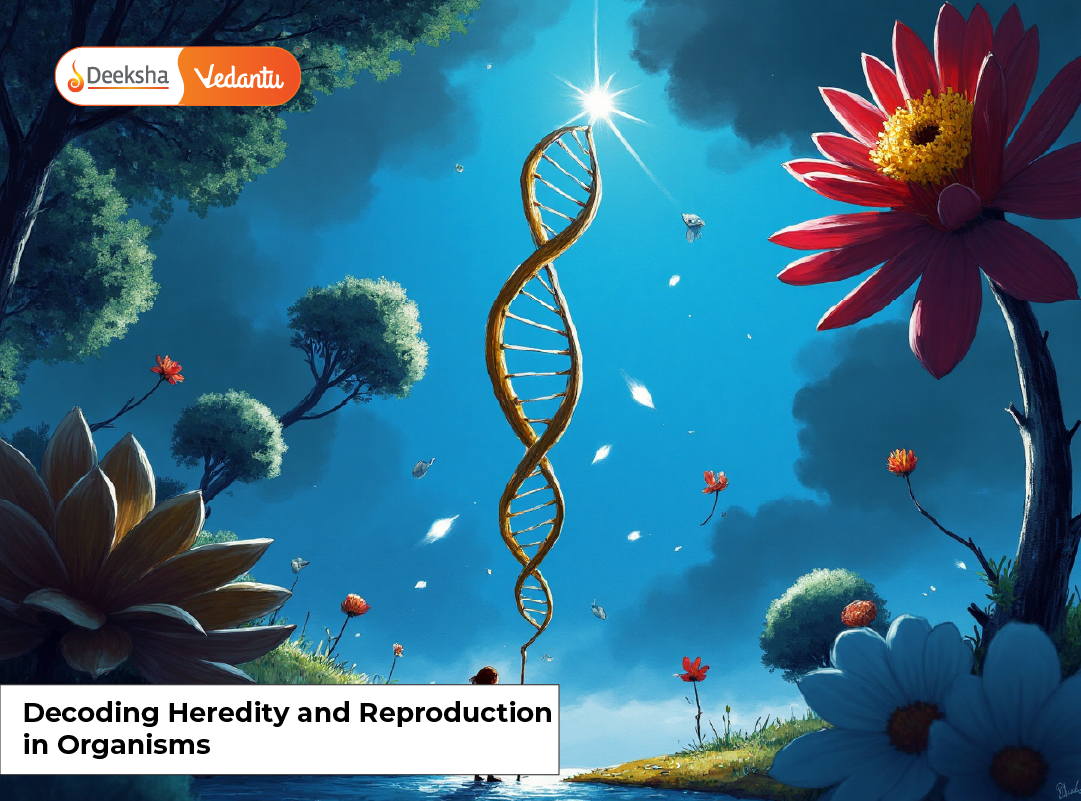


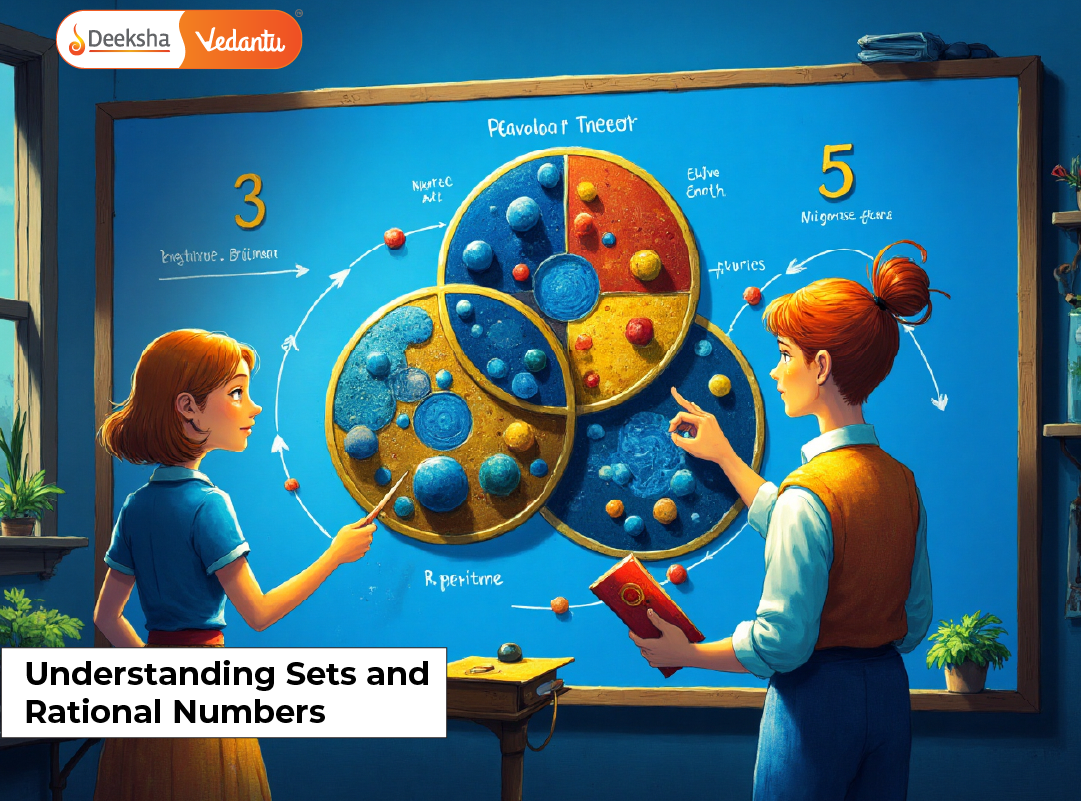



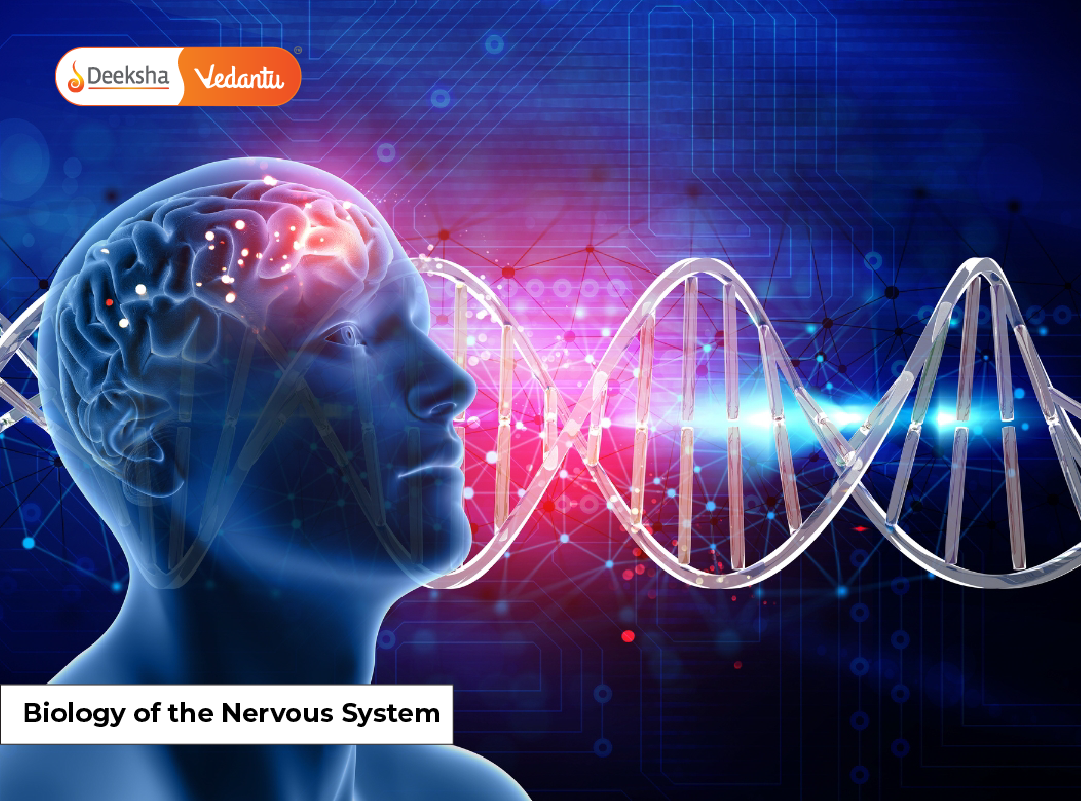
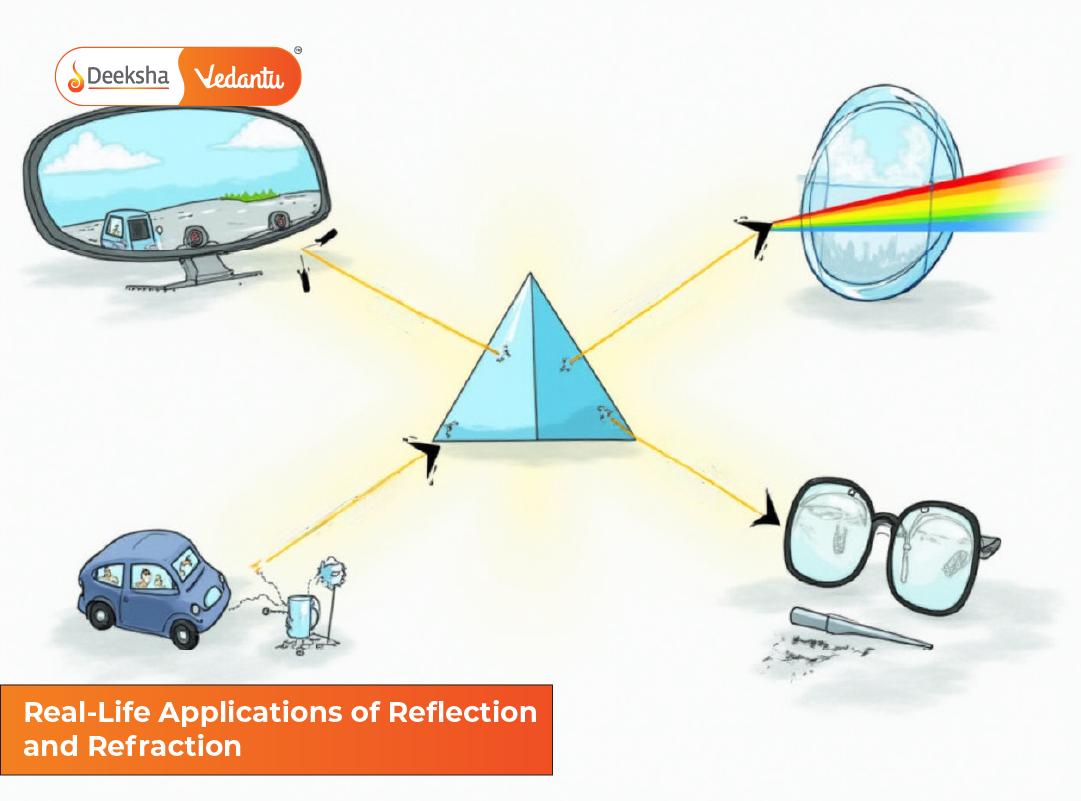
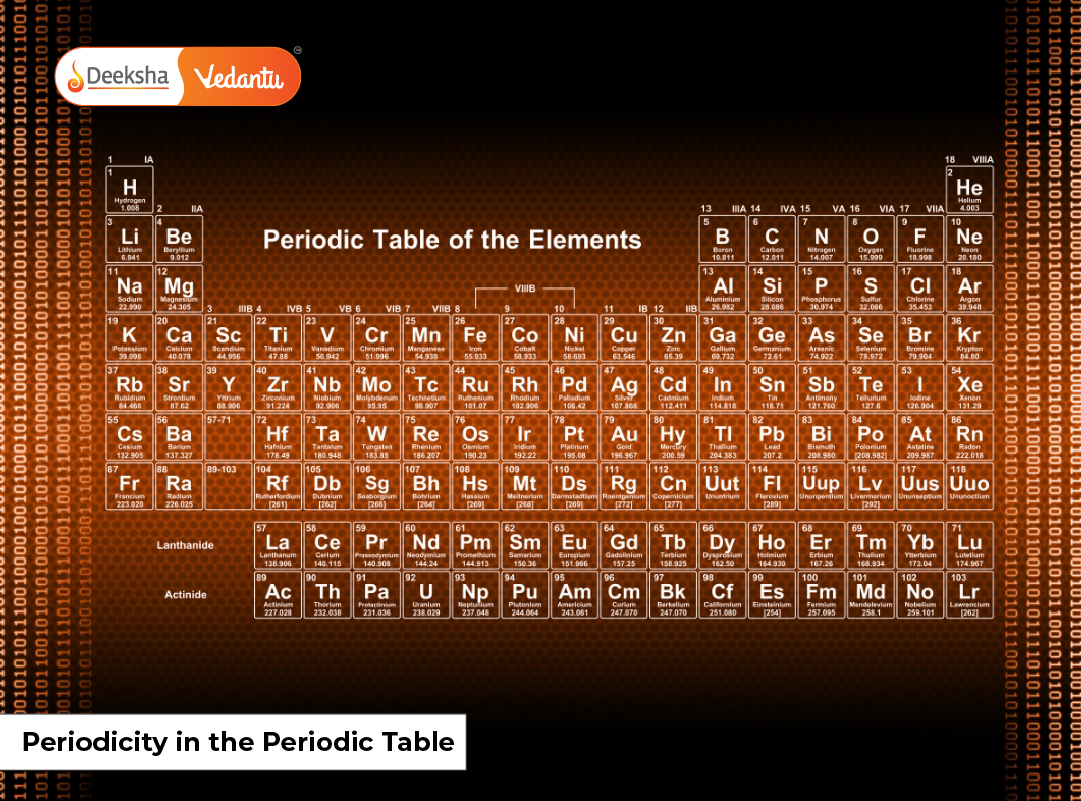



Get Social